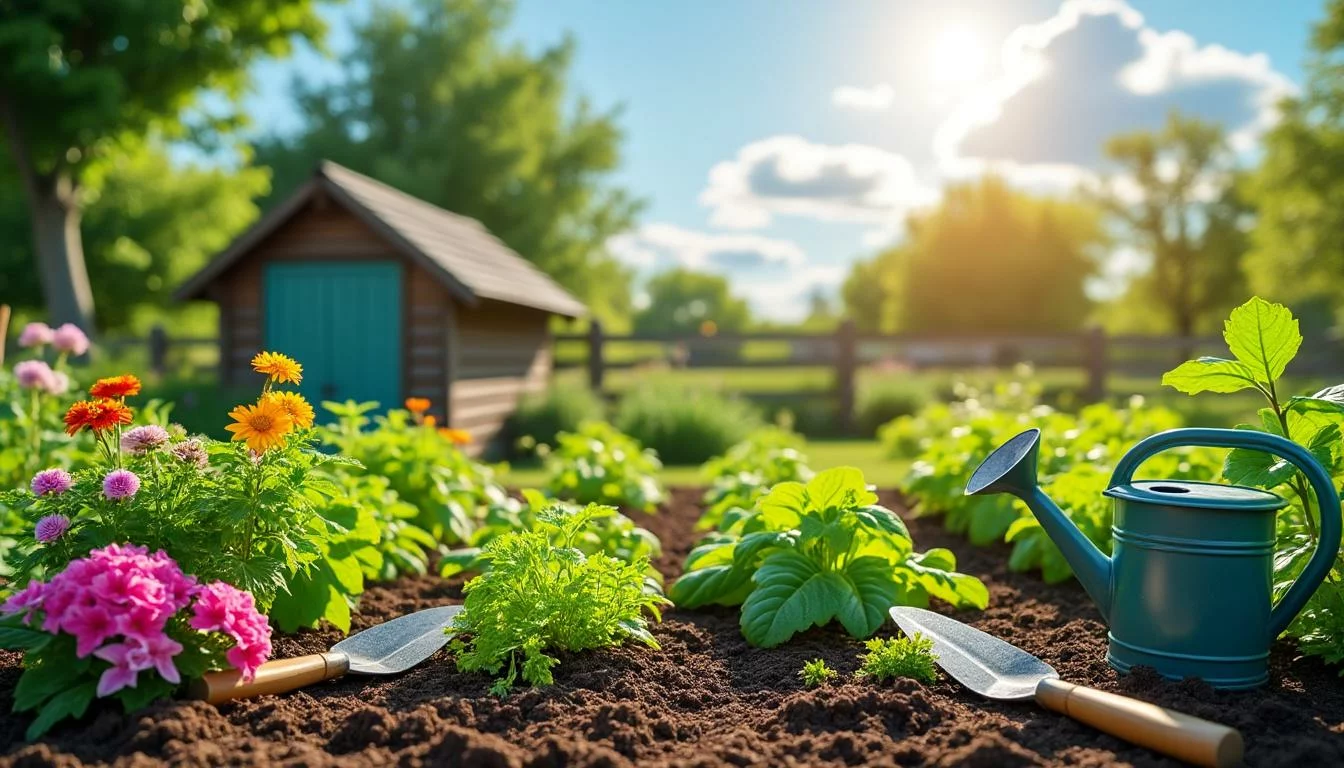Mastering the art of gardening is an evolving journey where strategic approaches to sunlight, water, soil, and plant care unlock the full potential of any garden. Whether beginning anew or refining seasoned skills, applying essential gardening insights can radically improve plant health, optimize growth conditions, and elevate the garden’s productivity. The following guidance draws upon the latest horticultural expertise and practical wisdom, revealing critical steps and methods that, if embraced earlier, could have transformed outcomes long ago.
Optimizing Sunlight and Environmental Conditions For Maximum Garden Growth
The foundation of a thriving garden starts with understanding the local climate and sunlight needs of each plant. Familiarity with your USDA Hardiness Zone is indispensable to choose species that endure your winters and prosper during the growing season. Timing is equally crucial—knowing the expected last frost date enables precise outdoor planting schedules, preventing costly setbacks from cold damage.
- Assess light requirements: Most vegetables demand at least eight hours of direct sunlight daily for ample yields.
- Utilize shade-compatible crops: Moderate shade areas are suitable for cool-season crops like lettuce and spinach.
- Select day-neutral varieties: Fruits such as strawberries labeled “day-neutral” flourish independently of day length fluctuations, producing reliably in temperate zones.
- Prioritize native species: These plants adapt better, sustain local pollinators, and typically require fewer resources.
Gardeners committed to these principles often find their efforts significantly rewarded by resilient plants and abundant blooms.
| Plant Type | Sunlight Needs | Best Planting Time | Special Notes |
|---|---|---|---|
| Tomatoes | Full sun (8+ hours) | After last frost | Optimal ripening at 68-77°F |
| Lettuce | Partial shade | Early spring or fall | Thrives in cooler temperatures |
| Strawberries (Day-neutral) | Full sun | Spring | Flowers irrespective of day length |
| Native Wildflowers | Varied (depending on species) | Based on local climate | Supports native pollinators |
Safety Precautions To Safeguard Garden and Home
Safety underpins all successful gardening ventures. Awareness of hazardous plants protects pets and family alike. Consulting the ASPCA’s toxic and non-toxic plant lists ensures informed decisions that avert poisoning risks. Equally, pre-digging measures, including contacting utility services using the 811 hotline, prevent accidents that could cause injury or costly damage.
- Review tool maintenance: Clean and sharpen tools like those offered by Fiskars and Black+Decker for efficient, safe use.
- Practice proper lifting techniques: Use correct body mechanics to minimize injury risks during heavy lifting.
- Manage compost responsibly: Decompose materials such as fall leaves and aged manure from trusted sources like Planet Natural and Miracle-Gro to enrich soil without harm.
These proactive measures enhance both garden health and your personal well-being.
Mastering Soil Quality and Irrigation For Robust Plant Growth
Optimal soil and watering practices directly influence plant vigor. Comprehensive soil management involves adding high-quality organic amendments and ensuring proper drainage. Avoidance of wet soil cultivation prevents structural damage, preserving aeration essential for root respiration.
- Use only cured manure: Fresh manure, especially from non-herbivores, risks plant ‘burn’ and contamination.
- Incorporate organic matter: Compost and aged manure enhance nutrient content and water retention.
- Water deeply and infrequently: Aim for 1-2 inches per week to promote deep root systems, using drip irrigation tools like those from Gardena to optimize water usage.
- Mulch with shredded leaves: Acts as natural insulator and nutrient source for perennials over winter months.
These strategies culminate in resilient gardens capable of enduring climatic variations.
| Soil Amendment | Purpose | Application Tips |
|---|---|---|
| Composted Manure | Improves nutrient content and soil structure | Use only manure aged at least six months |
| Organic Compost | Enhances moisture retention and aeration | Mix thoroughly with existing soil before planting |
| Shredded Leaves | Provides mulch and nutrients | Apply 3-6 inch layer post-frost on perennials |
| Drip Irrigation | Ensures targeted and efficient watering | Install close to plant roots, water weekly deeply |
Pruning, Planting, and Transplanting For Enhanced Garden Longevity
Proper timing and technique in pruning and transplanting sustain vibrant growth and recurring blooms. Spring-flowering shrubs require pruning immediately after they bloom to preserve next year’s buds, while perennial division adapted to late summer or early fall facilitates rejuvenation.
- Deadhead annuals: Removes spent blooms, promoting continuous flowering.
- Plant bulbs in fall: Planting spring-blooming bulbs like tulips before freezing solid provides reliable bloom cycles.
- Transplant with root care: Ensure holes twice as wide as root balls and replicate soil depth to reduce transplant shock.
- Control weeds by hand and mulch: Minimizes soil disturbance, preventing germination of weed seeds.
These measures maintain garden aesthetics and functionality year after year.
Expert Tips For Cultivating Fruits and Vegetables That Thrive
Achieving flavorful and abundant harvests rests on precise temperature management, plant care, and harvesting techniques. For example, tomato ripening is temperature dependent, with ideal ranges between 68 and 77 degrees Fahrenheit for pigment development. Modulating flower removal on plants like rhubarb optimizes leaf growth, whereas correct soil mounding and storage safeguards potato quality.
- Manage tomato temperature: Harvest and ripen indoors if outdoor temperatures venture below 50°F.
- Remove rhubarb flowers: Directs plant energy into foliage production.
- Hill potatoes deeply: Prevents greening and toxic solanine formation.
- Use proven seed suppliers: Select high-quality seeds from reputable sources like Burpee and Bonnie Plants.
Leveraging these advanced practices delivers superior produce with greater shelf life and flavor.
| Vegetable/Fruit | Special Care Tips | Storage Recommendations |
|---|---|---|
| Tomatoes | Ripen indoors below 50°F | Keep in cool, dry place |
| Rhubarb | Remove flowers promptly | Store stalks refrigerated |
| Potatoes | Hill soil deeply; avoid light exposure | Store in dark, cool environment |
Advanced Resources To Sharpen Your Gardening Expertise
- Explore beginner to advanced techniques at Daily Bakersfield News Gardening Tips for Beginners.
- Discover efficient planting strategies for limited space at Container Vegetables for Small Spaces.
- Stay informed on planting specifics by regional climate via Gardening Tips Lancaster.
- Track innovative gardening products and plant care advice at Home Garden Insights.
- Dive into comprehensive plant care guidance from experts at Plant Care Advice by Pat Sullivan.
Frequently Asked Questions About Enhancing Your Green Thumb
- How important is soil testing before planting? Soil testing is vital to tailor amendments and fertilizer applications precisely, ensuring nutrient availability and optimal pH balance.
- What role do native plants play in a garden? They support local ecosystems, require less maintenance, and foster pollinator biodiversity.
- How often should garden tools be maintained? Regular cleaning and sharpening before each planting season maintain tool efficiency and safety.
- Can drip irrigation save water? Yes, it targets watering where needed, reducing waste and promoting healthier root systems.
- When is the best time to prune flowering shrubs? Immediately after they flower to preserve next season’s blooms and avoid cutting flower buds.

